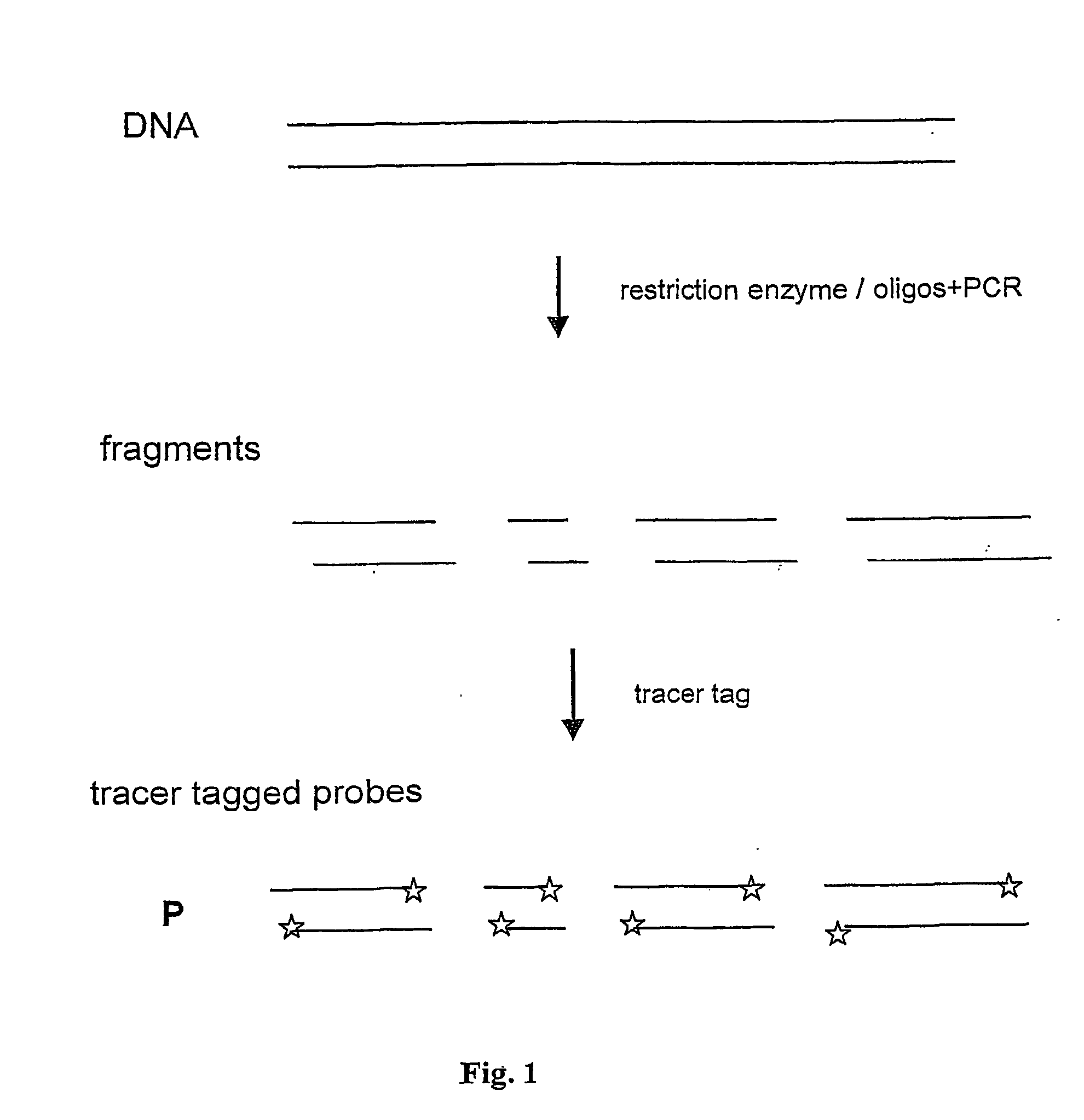Method and test kit for quantitative determination of variations in polynucleotide amounts in cell or tissue samples
a polynucleotide and quantitative determination technology, applied in the field of methods and test kits for quantitative determination of variations in polynucleotide amounts in cell or tissue samples, can solve the problems of large redundancy in actual tests, low yield, and inability to compare spots with sufficient accuracy, etc., and achieve the effect of convenient continuation of the process
- Summary
- Abstract
- Description
- Claims
- Application Information
AI Technical Summary
Benefits of technology
Problems solved by technology
Method used
Image
Examples
case 1 -
[0066] Case 1--A Known Genome (Yeast or Man)
[0067] The DNA fragments are selected to represent individual genes and their sizes are chosen to allow a good resolution in the size fractionation-stage.
case 2--
[0068] Case 2--Unknown Genomes (Filamentous Fungus, Trichoderma reesei)
[0069] A set of representative clones of about 50 kb in size are cleaved with a suitable restriction endonuclease recognizing a 4 base recognizing restriction endonuclease site, in order to generate a set of distinct fragments. In this case, a DNA fragment may span two genes and thus hybridize with two analyte RNAs. It is possible to have several fragments for one gene. Alternatively, in some cases different fragments with identical size can be used. To cover a complete genome, redundancy is required and consequently hundreds of soluble DNA pools are needed.
[0070] Step 2--End-Labelling the DNA Probes with a Tracer Tag or a Fluorophore
[0071] Preferably, two (or more) sets of the DNA with distinguishable dyes are prepared. This allows simultaneous comparative studies of variations in expression patterns or transcription profiles due to internal mechanisms, e.g. pathological stages or due to external stimuli, such a...
example 1
Quantitative Evaluation
[0113] A Plasmid, pAS11, Composed of a Vector Part and an Insert Part (cDNA), is Used to Create a Probe Pool.
[0114] Said plasmid was created from a pSP73 cloning vector (Promega, P2221) and from a yeast vector pAS4, containing endoclucanase-5 cDNA (Saloheimo, A., et al., Mol. Microbiol. 13, 219-228, 1994), a novel, small endoglucanase gene, egl5, from Trichoderma reesei isolated by expression in yeast (Saloheimo et al, 1994). The egl5-cDNA was digested out from pAS4 by EcoRI-partial XhoI-digestion, the ends were blunted by filling using Klenow Fragment (1008404 Boehringer-Mannheim) and ligated to SmaI digested pSP73 vector to create pAS11. The vector contained a T7 promoter allowing in vitro transcription. The plasmid was also used for preparing RNA in the model examples. The steps in these model experiments differed somewhat from the main steps described in the generalized method of the present invention. The experiment followed the steps set forth below:
[011...
PUM
| Property | Measurement | Unit |
|---|---|---|
| pH | aaaaa | aaaaa |
| pH | aaaaa | aaaaa |
| pH | aaaaa | aaaaa |
Abstract
Description
Claims
Application Information
 Login to View More
Login to View More - R&D
- Intellectual Property
- Life Sciences
- Materials
- Tech Scout
- Unparalleled Data Quality
- Higher Quality Content
- 60% Fewer Hallucinations
Browse by: Latest US Patents, China's latest patents, Technical Efficacy Thesaurus, Application Domain, Technology Topic, Popular Technical Reports.
© 2025 PatSnap. All rights reserved.Legal|Privacy policy|Modern Slavery Act Transparency Statement|Sitemap|About US| Contact US: help@patsnap.com



